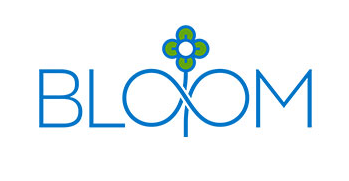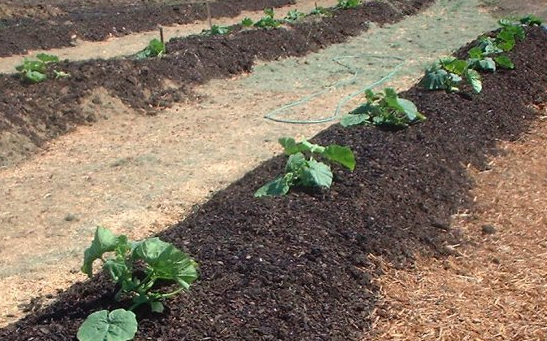DC Water Turns Sewage Into a Soil Fertilizer called Bloom
Published on by Water Network Research, Official research team of The Water Network in Business
DC Water cooks, sterilizes, and turns sewage into a soil fertilizer called Bloom, and ships to nurseries and garden centers in the region.
Ignore the “ick” factor. DC Water is among a handful of utilities that is innovating to save or generate money. Philadelphia’s utility is using the water that washes into the sewers during storms to keep its parks green. And in Portland, Ore., purified wastewater is being used to make beer.

The Washington initiative is ambitious. The process begins with the matter flushed down a toilet, which may travel through any of DC Water’s 1,800 miles of sewer pipes to the wastewater-treatment plant. Oils, fats, sediments, and objects are screened out, and the water is disinfected.
The remaining sludge then goes through a three-stage process that cooks it in high heat and pressure, sterilizing and softening it. The clean sludge is then sent to four 80-foot-tall anaerobic digesters, where giant mixers churn the liquid for two weeks while a population of microorganisms called “methanogens” eats the organic matter, producing methane gas for electricity that ultimately powers a third of the water plant’s operations.
The solids then travel to a belt-filter press that squeezes out water and delivers the crumbly compost to bunkers that can hold 1,000 tons each.
The result can be used to fertilize gardens and trees. (Bloom fertilizer is in high demand, says Brian Riddle, who bought 1,000 tons of it for his D.C.-area garden centers, Homestead Gardens. He says it’s hard to find affordable fertilizer that’s safe and natural. “Bloom,” he says, “is loaded with valuable nutrients.”)
DC Water spent several years investigating and testing the technology, which was already in use in Europe, before spending $470 million on the equipment two years ago.

DC Water would have needed to spend most of that money anyway to treat the biosolids, and this was a way to do that in a sustainable manner and generate revenue to fix aging pipes. More than half of the D.C. pipes are 79 years or older—some date to 1860—and the agency estimates a need for at least $1 billion in repairs in the coming years.
DC Water’s new investment has allowed it to cut its operating budget, as well as its biosolid disposal and energy costs, making it the largest generator of clean energy in the Washington, D.C., area. The utility has even more plans to generate revenue, including selling “sewer-thermal energy,” which uses heat exchangers inside the city’s underground sewage system to heat and cool buildings—much like traditional geothermal energy drawn from the earth’s core.
The sewer energy is being tested at several of DC Water’s own buildings before being rolled out to potential customers. Other plans are in the works too. They give new meaning to the old phrase “Waste not, want not.”
Read more: Fortune
Media
Taxonomy
- Agriculture
- Nutrients Recovery
- Agriculture
- Waste to Value
- Business Strategy
- Water Utility
- Nutrient Recovery & Reuse
- Waste Management
5 Comments
-
Talk about a need to drain the swamp. DC scum are at it again. Who in the hell needs more gas and more ability to kill microbial life in the soil, drain every last element out of our drinking water, and still think they are doing good for the environment and people. If you belong to the organization that supports population reduction by 90% by 2030 then your efforts are clear. Jean Marius is the only logical thinking man on this thread. He asks you questions in 2 languages. Answer him if you are man enough to.
-
Bonjour
Non les eaux usées ne peuvent en aucun cas reservir d'eau potable.
Je pense qu'il n'existe en core au monde aucun dispositf qui puisse avoir une performance d'épuration et de purification totale de l'eau souillée par la pollution dissoute.
En outre vouloir faire de l'eau potable à partir des eaux usées c'est bien mal comprendre le cycle naturel de la production de l'eau potable par la NATURE.
Cette eau potable Naturelle, contient des éléments qu'aucune technicité aussi élaborée ne puisse reproduire. Cette technicité ultra performante ne produira qu'un liquide neutre inerte.
Qu'apportera t-il au besoin du corps humain?
En outre le liquide eau usée aura perdu la majorité des éléments qui le compose durant la consommation. Mais il sera imprégné de toute la pollution dissoute injectée dans le circuit générale de l'assainissement.
L'homme du 20éme sicèle a cru qu'il serait plus fort que MERE NATURE. C'est vrai que parfois il obtient des résultats substentiels perceptibles que sur des cas très isolés
Quand est ce que l'homme comprendra qu'il ne sera jamais plus fort que la BIOLOGIE.
Hello
No sewage cannot youself of drinking water.
I think that there is in Korea to the world no drive that can have a performance sewage and water contaminated by dissolved pollution total purification.
In addition to make drinking water from wastewater is well understand the natural cycle of the production of drinking water by NATURE.
This natural drinking water, contains no as elaborate technicality can reproduce. This powerful ultra technical expertise will only produce an inert liquid.
T will bring it to the needs of the human body?
In addition the liquid waste water will have lost most of the elements which composed it during consumption. But it will be imbued with all the pollution chemical dissolved, injected into the General circuit of sanitation.
The man of the 20th century believed it would be stronger than mother NATURE.
It's true that sometimes he gets results substentiels visible as very isolated cases when is that man will understand that it is never stronger than biology.
-
Once dried the biosolids become excellent fuel for a down draft gasification system.
1 Comment reply
-
The energy produced by using the biosolids as fuel can help dry to sludge as well as produce electricity to operate the plant. The biosolids are then reduced to minerals.
-
-
Jean Marius is quite correct. All waste is a collection of compounds taken out of natures natural flow of recycling its nutrients back to the soil etc. Try not killing the living organisms and allow them to be recycled. Because they are in an enclosed area cut off from nature bring nature to them. Using modern microbiology, bioremediation, and the ARCHAEA species and all of the processed effluent can be reused as potable drinking water. Residential/building units of aerobic biodigesters would eliminate all pipe infrastructure. Making them EMP proof. Yes you can also use for crops.
-
Bonjour
Ca y est on va droit dans le mur à faire du grand n'importe quoi. On stérilise de l'eau usée et on en fait un engrais fertilisant. On tue tout le Vivant et on fait du vivant pour nourrir du vivant.
Comment l'homme est-il arrivé à ce stade de mépris du Vivant , de la science de la VIE, de la Biologie.
On stérilisant on tue tout, c'est un élément mort , inerte, de la boue, un véritalbe poison pour l'environnement.
Mais comment a t-on pu en arriver à ce stade d'autodestruction?
Hello
this is we're going straight into the wall to make the great anything. We sterilize waste water and is actually a manure fertilizer. We kill all alive and we do the living to feed the living.
How man arrived at this stage of contempt was alive, the science of life, of biology.
Sterilizing on we kill everything, this is a dead, inert, mud, a global poison for the environment.
But how did - we have arrived at this stage of self-destruction?
1 Comment reply
-
Fantastic Jean. Extremely important information with a ton of passion. In America we have a saying for these people. "how can they walk and chew bubblegum at the same time". Or in the movie Forrest Gump. Stupid is as stupid does. Looking forward to your progress. Please contact me if you have any questions. Mon ami.
-